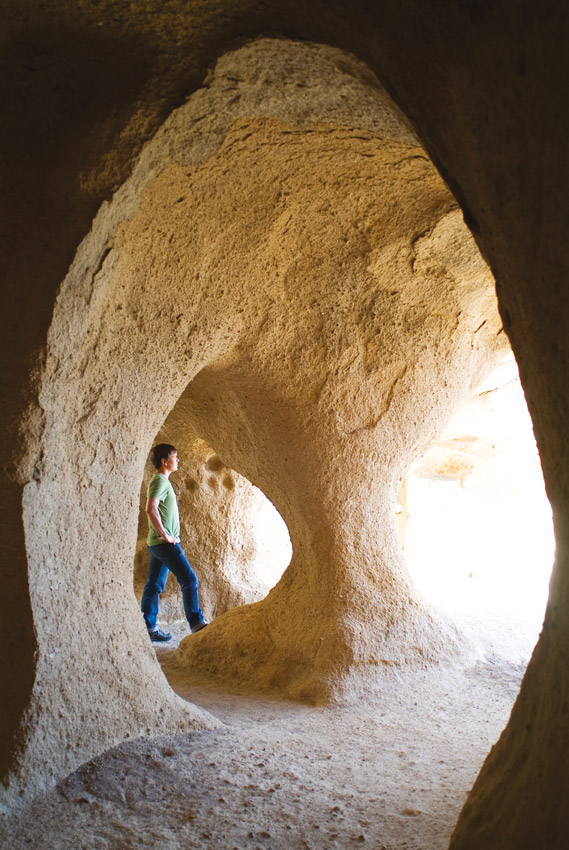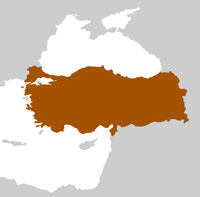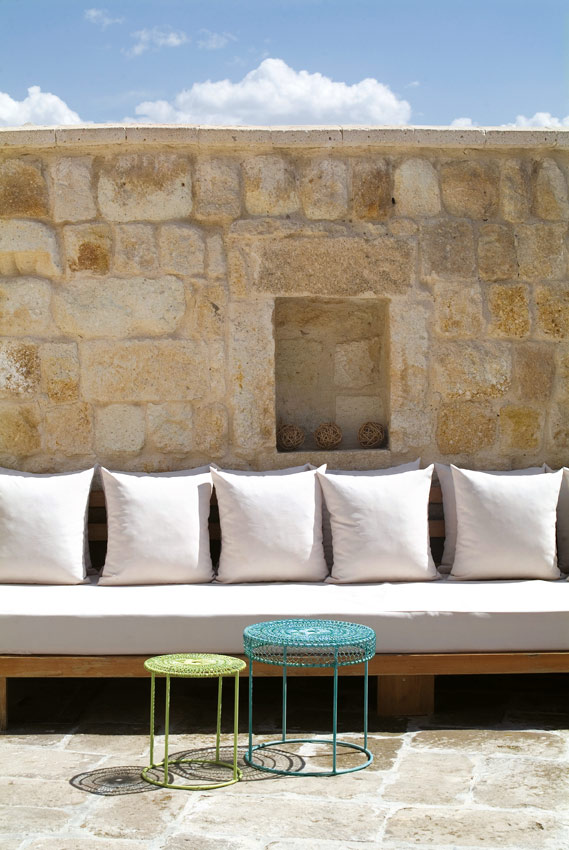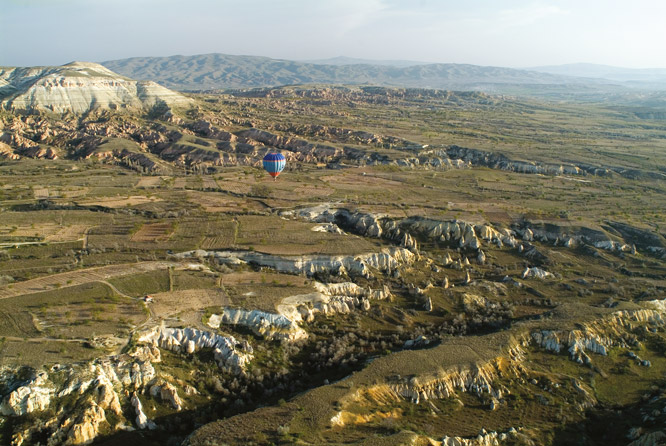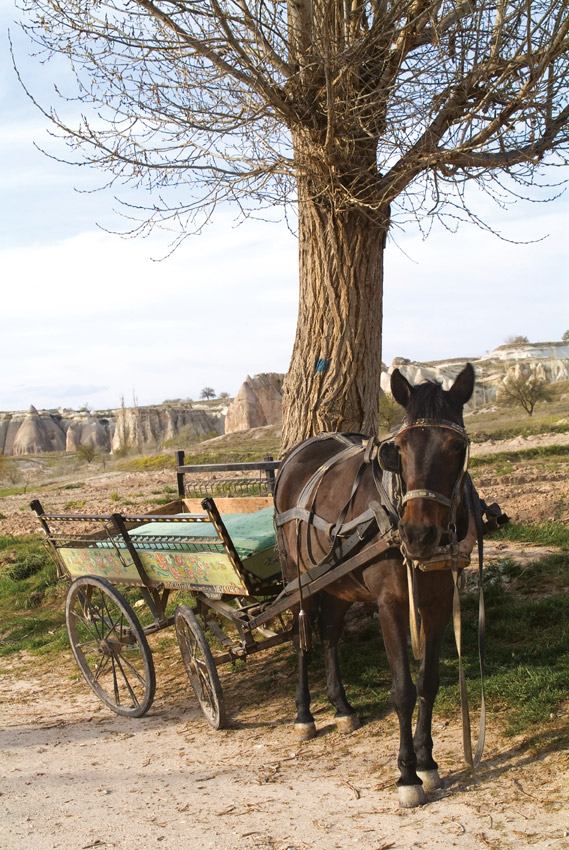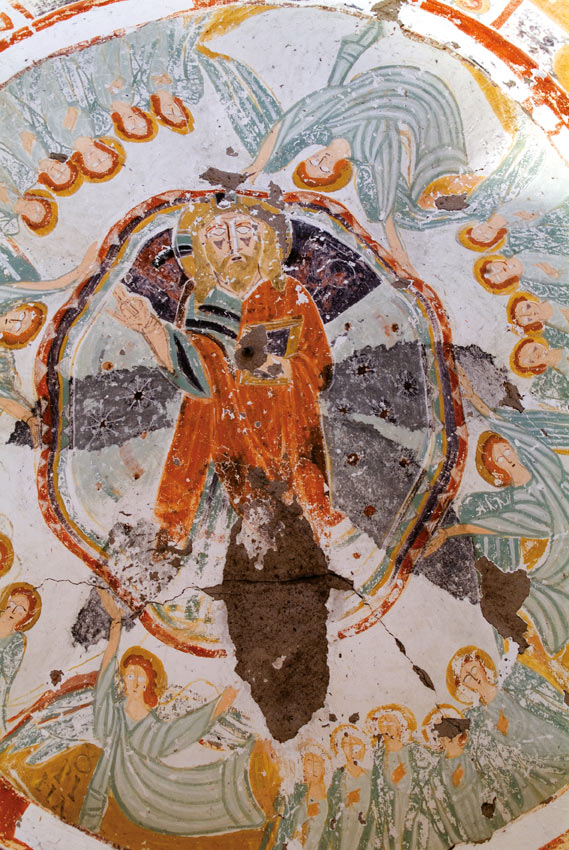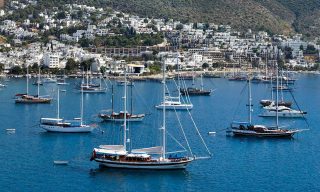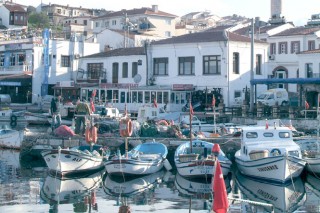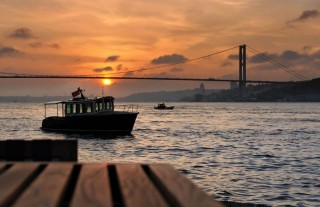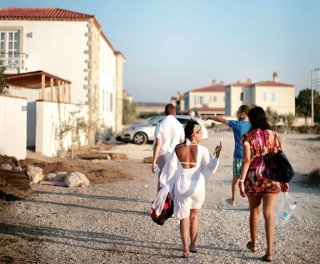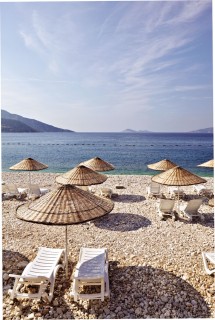Above: Üçhisar Castle.
Even as tourism flourishes amid the ancient cave churches and rock-cut villages of Turkey’s Cappadocia region, escaping the crowds is as easy as hopping on a bike.
By Leisa Tyler
Photographer: Leisa Tyler
On a glorious spring afternoon, I stand at the crest of a Cappadocian valley and try to make sense of the surreal scenery spread out before me. Located in the arid heart of Anatolia, Cappadocia was smothered millions of years ago by layers of volcanic ash, which over time formed great folds and creases of a soft beige rock known as tuff. This, in turn, was sculpted by wind, rain, and snow into one of the most extraordinary landscapes on the planet: sheer-sided canyons studded with undulating outcrops and bizarre phallic protrusions known as “fairy chimneys,” some standing 30 meters tall.
Stranger yet is the imprint left by the ancient cultures that inhabited this high plateau in central Turkey. Around 1900 B.C., at the height of the Bronze Age, Hittite settlers began cutting cave houses into the tuff. By the second century A.D. there were whole town ships of troglodyte dwellings. Excavated by early Christians fleeing persecution by the Roman Empire, these underground cities complete with water wells, air shafts, and networks of tunnels connecting to schools, churches, wineries, and stables could be eight or more levels deep and accommodate thousands of people for months at a time. More were built as refuges against the Arab raids of the Byzantium period, though how many remains a matter of archeological conjecture. Some estimates range into the hundreds.
I first visited Cappadocia in 1996. Still fresh from being declared a World Heritage Site, the region then attracted only a trickle of backpackers who would linger for weeks, as I did, trekking through the Dalíesque terrain, admiring biblical frescoes in cave churches, toasting our adventure with aniseed flavored arak, and sleeping in basic guesthouses that had been scooped out of the supple rock.
What a difference a decade or so makes. In 2008, the dusty village of Üçhisar, distin guished by a Byzantine hilltop fortress known as Üçhisar Castle, secured Cappadocia’s first big luxury hotel, the Cappadocia Cave Resort. Here, 79 stone-walled guest rooms and a spa overlook the flame red rocks of the Kizilçukur Valley. Nearby is another newcomer, the Argos, designed by the late Turkish architect Turgut Cansever on the site of an ancient monastery. Some suites come with private cave pools, while tunnels once belonging to Üçhisar Castle lead to a subterranean cellar stocked with wine from the hotel’s own vineyard.
For me, the pick of Cappadocia’s cave style accommodation is Serinn House, a five room property tucked into a dramatic rock face behind the town of Ürgüp. I’m impressed as much by the designer furnishings there are pieces by Jasper Morrison, Charles Eames, and Philippe Starck as by homey touches like the doorbell you have to ring to be let in, or the overflowing platters of homemade yogurt, cheese, and preserves served for breakfast.
Over lamb stew and a bottle of ruby-red local wine, Eren Serpen, Serinn House’s Istan bulite owner, tells me how she first visited Cappadocia on holiday a few years ago, fell in love with the place, and decided to stay. She opened Serinn House in 2007, at a time when the competition consisted mostly of cookie cutter three star lodgings or backpacker billets.
Though she wasn’t entirely convinced that the region was ready for an upscale hotel, her rooms have been practically full from day one.
“Cappadocia started changing after Asmal? Konak [‘The Mansion with Vines’] aired in 2002,” Serpen says, referring to a wildly popular Turkish soap opera shot in the town of Mustafapa?a. “That really put it on the map.”
Tourism today is booming—sometimes overwhelmingly so. The streets of Göreme, a once sedate village of sugar-cube houses and carved-out fairy chimneys, are now filled with carpet shops and chatty touts. My attempt to access the Göreme Open Air Museum, a rock-cut monastic complex that houses Cappadocia’s best-preserved collection of cave churches and rectories, was impeded by busloads of American and Japanese tourists cramming the ticket stand. The skies above are likewise crowded. One of Cappadocia’s top attractions these days is hot-air ballooning. But the morning I join Kapadokya Balloons for a one-hour flight, squeezed into a basket with 15 other passengers, my enthusiasm is deflated by the sight of another 38 balloons in the air.
The upside, of course, is the bounty of pleasant hotels and marvelous restaurants like ?ömine, where Serpen and I are having dinner. Yet Serpen assures me that opportunities to escape the crowds abound, and to prove her point, sets me up the next day with Cem Güllüo?lu from Argeus Travels. Picking me up from my hotel in a van with two mountain bikes strapped to the back, Güllüo?lu tells me we are going on an offroad excursion to places where few tourists venture. We don’t have to go far. Leaving Ürgüp on our bikes, we veer onto a sandy track and 10 minutes later reach a valley filled with miniature fairy chimneys. It’s an exhausting slog that takes us over hills and through streams. Before long, I’m wet, dirty, and saddle sore. But the sights along the way offer ample compensation: lovingly tended almond and apricot orchards drenched in spring blossoms; a sheer cliff pocked with hundreds of pigeonholes; an ancient Byzantine cave church boasting a faded fresco of Jesus surrounded by angels. Best of all, there is not another soul in sight.
Güllüo?lu and I end our 25-kilometer ride in Mustafapa?a at the Old Greek House, the very mansion that the TV show Asmal? Konak was based around. Prior to Turkey’s mass expulsion of Orthodox Christians in 1923, Mustafapa?a was home to a wealthy community of ethnic Greeks, and this house, built of tuff stone in the 1880s, is a fine example of Hellenic masonry. Now run as an inn, the building has seen better days; the paint is flaking and the rickety staircase leading to the frescoed bedrooms appears to be on the verge of collapse. But the food—hearty stews, vine wrapped dolmas-is delicious, and we welcome the chance to stretch our legs in the town’s cob- bled streets and plazas, where men sip tea and quibble over games of chess.
That night I head to Üçhisar for dinner. High on my culinary wish list has been a meal at Elai, an acclaimed modern Turkish restau- rant that has been fully booked all week. I’ve finally managed to snag a table, and to cele- brate, I order a glass of 2008 Öküzgözü, a full bodied red made from native grapes. The wine is superb—bursting with blackberries and raisin—but tour groups cram the dining room and my tiny salad is overpriced and lack luster. So I pay my bill and head off in search of something more authentic.
Busy by day, Üçhisar is eerily quiet at night. The car parks are empty, and the town’s handful of pizza joints and baklava bars have long since closed. I’m about to turn back to my hotel when I catch a waft of fresh bread and char-grilled meat issuing from a tiny diner tucked amid trees in a grassy square. Inside, tables of locals are feasting on juicy, perfectly spiced kebabs beside a roaring fire.
I join them for what turns out to be the most memorable meal of my trip. And that, as any archeologist might tell you, is the thing about Cappadocia: you never know what a little digging will uncover.
THE DETAILS:
CAPPADOCIA
Getting There
From Istanbul, Turkish Airlines (thy.com) operates four flights a day to Erkilet
Airport in Kayseri, gateway to the Cappadocia region.
Where to Stay
These days, Cappadocia’s hotel scene includes everything from Üçhisar’s five-star Cappadocia Cave Resort (90-384/219-3194; ccr – hotels.com; doubles from US$346) to Serinn House (90-384/341-6076; serinnhouse.com; doubles from US$150), a five-room inn outside Ürgüp.
Touring
Full-service agency Argeus (90-384/341-4688; argeus.com.tr) offers biking and trekking tours throughout the region. To explore it by air, sign up for a dawn flight with Kapadokya Balloons (90-384/271-2442; kapadokyaballoons.com).
Originally appeared in the April/May 2011 print issue of DestinAsian magazine (“Heart of Stone”)

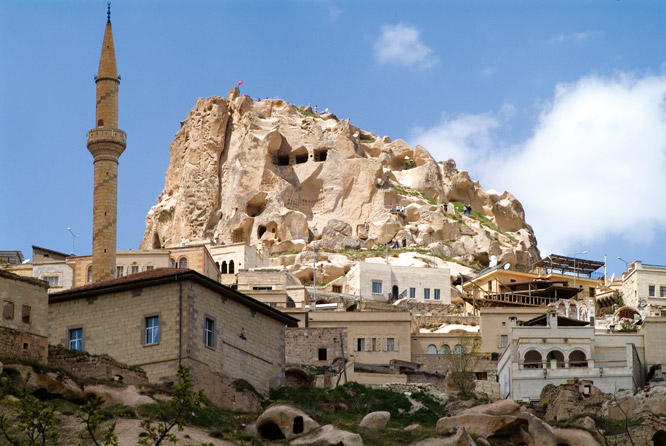
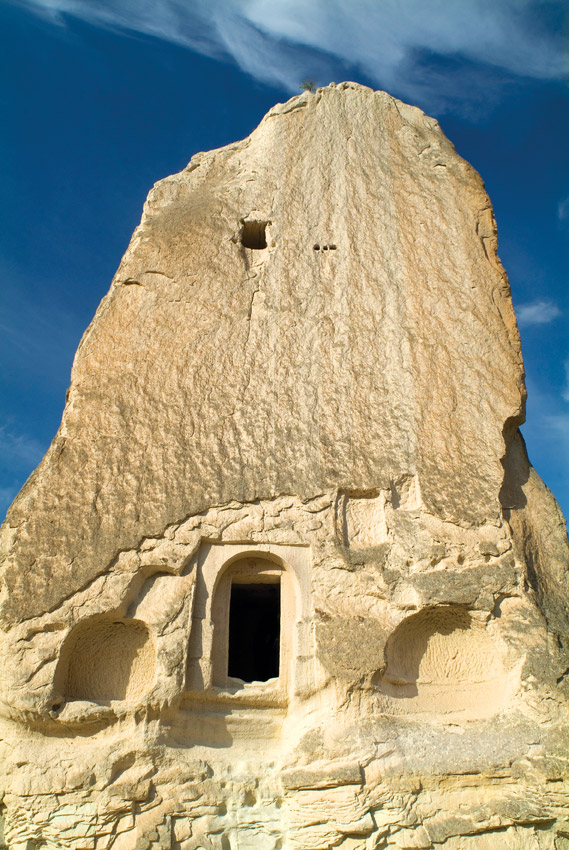 Solid State
Solid State 